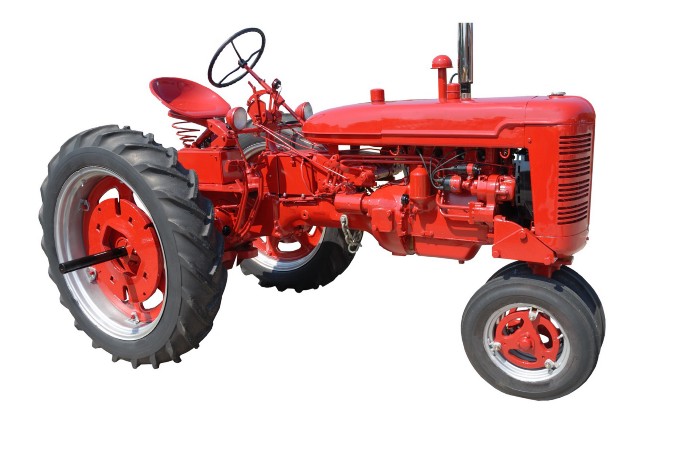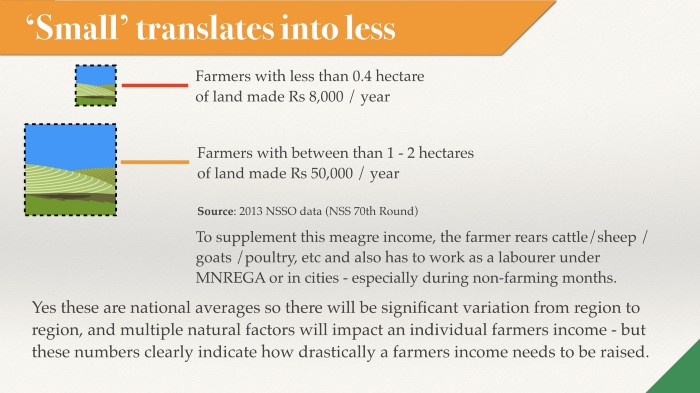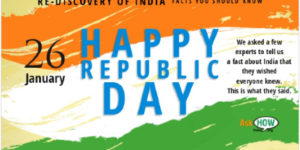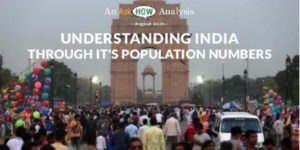Frequently Asked Questions on Farmer protestsfeatured
Delhi has seen protests from farmers for a few months now and the protests are likely to continue in the foreseeable future. Something else that seems set to continue for the foreseeable future is arguments on social media. These discussions are usually more strongly grounded in emotions than in facts. When the family WhatsApp group of one of the authors was consumed for a few hours by such a discussion, we decided that it is our duty to collect some of the relevant facts and put them in one place for the convenience of us argumentative Indians. We hope that after reading this piece, you will have more specific suggestions on How the Government should use your taxes to support Farmers. You may find that it is more difficult than selecting 11 players from 20 deserving ones, to use a cricketing analogy.

Image by Paul Brennan from Pixabay
This post is a set of questions and answers. The questions are what we see being asked on social media. The answers may be too detailed for some readers. Feel free to skip to summary at the end of the longer answers if you are pressed for time.
Why can’t the government support farmers?
The government does. A lot of money is budgeted and spent by the central and state governments on farmers and on rural areas.
The Central Government has many schemes to support farmers. The biggest of them is PM — KISAN. In 2020–21, the budgetary provision for this scheme was Rs. 75,000 Crores. Under the scheme, all farmers in the country get Rs. 6,000 per year. The Ministry of Agriculture has many other schemes and the total provisions for all of them in 2020–21 was Rs. 1,42,762 Crores. In addition to PM-Kisan, this money was for subsidies on interest on loans and crop insurance amongst other things.
Additionally, fertilizers are subsidized in the country. The provision for this subsidy in the 2020–21 budget was Rs. 71, 309 Crores.
The Mahatma Gandhi National Rural Employment Guarantee scheme (MNREGA) is an employment guarantee for rural India. It is available to both farmers and non-farmers. Poorer farmers are likely to benefit from it. The provision for MNREGA in 2020–21 was Rs. 61,500 Crores. The Central Government also has other schemes for rural areas and the total budget outlay in 2018–19 (including for MNREGA) was Rs. 1,22,398 Crores. This included provisions for rural housing and rural roads in addition to the provisions for MNREGA.
Now the money for rural roads, housing and MNREGA does not go only to farmers as there are landless laborers and other non-farmers that live in rural areas. However, it is safe to assume that a large chunk of the money does benefit farmers. Take rural roads for example. Good rural roads mean better market access for the farmers as well as lower cost of transportation. As another example, farming families can take advantage of MNREGA especially if they are poor.
Of course, this is not all. Money from education and health budgets would go to rural areas (as it should). Additionally, State Governments spend a lot of money to help farmers. For example, electricity is subsidized for farmers and state governments compensate the electricity distribution companies for providing free or cheap electricity to farmers. Periodically governments across the country waive the outstanding amount of loans to farmers and have to compensate the institutions that have extended those loans.
It should be mentioned here that the governments may be spending money but not all money may reach the farmers. For example, many believe that the fertilizer subsidy helps the companies manufacturing them much more than it helps farmers. Or that the electricity distribution companies hide their corruption and inefficiency by exaggerating the losses they make on selling cheap electricity to farmers.
Summary: The Central Government spends a lot of money on helping farmers and rural India. The money is spent on direct financial transfer to farmers, subsidy for credit, crop insurance, and subsidy for fertilizers. Money is also spent on the employment guarantee scheme, MNREGA and on rural housing and rural roads. State Governments also help farmers financially. For example, by providing cheap or free electricity. Additionally, money from health and education budget would also flow to the rural areas. Does all the money reach farmers? No. Subsidies like the fertilizer subsidy are known to be inefficient. Electricity distribution companies are known to hide their commercial losses by blaming them on farmers.
In addition to the above, one of the big ways that the government supports farmers is by Minimum Support Prices (MSP). Let us take a look at it next.
Why can’t the government increase the price it pays farmers under MSP?
How does the system of Minimum Support Price (MSP) work? The government announces a price for many crops. This announced price is higher than the market price. However, this price is effective in raising the price for farmers only if the government purchases the crops. The government does not have sufficient machinery — procurement and storage places, ability to grade and sort, etc. to buy grains other than wheat and rice. Hence, most of the procurement is in these two grains.
When the government purchases a grain at a high price, the price of the grain increases in the market. It can become unaffordable for many people. To support the poor, the government sells grains through the Fair Priced shops at a highly subsidized rate. The government needs to pay the difference between the purchase price and sale price through its budget. This is food subsidy.
The provision for food subsidy in the 2020–21 budget was Rs. 1,22, 235 Crores. How does the food subsidy work? The central government buys grains — primarily rice and wheat — and then sells it to states. The price at which this sale is made is called the Central Issue Price. The CIP has been fixed since 2002 and has been between Rs. 3 /kg and Rs. 6.95 / kg. The Economic Cost for wheat and rice has increased steadily and in February 2020 it was Rs. 27 / kg and Rs. 37 / kg.
Food Corporation of India (FCI) and state governments buy the grains on behalf of the central government. In the last few years, the government has ended up not giving the money that it has budgeted to FCI. However, if anything the budgeted amount is actually an understatement of food subsidy because FCI has been borrowing money to support buying of grains at high price and selling them at much lower price (or storing them). The dues from the government of India to FCI have increased from 41,517 crore at the end of 2015–16 to Rs 2.4 lakh crore at the end of 2019. This money will need to be paid by the government at some time.
Summary: An enormous amount of money is spent on food subsidy in India. This money is spent on buying grains at a high price and selling it at a low price. The high price is MSP. Mainly wheat and rice are bought under MSP.
Who does the food subsidy benefit?
Does the food subsidy go to farmers or consumers? Both do but it is not clear how much benefit either of them gets. The price at fair price shops is much lower than what it is in the market. However, the market price is higher than it would otherwise be because of MSP. Indeed that is the purpose of MSP.
Incidentally not many farmers get the benefit of procurement under the MSP. According to this article from Ashok Gulati
“What is the reality about MSP? The NSSO’s Situation Assessment Survey (70th round) revealed that in 2012–13, only 6 percent of farmers sold their produce at MSP.”
These farmers are mainly from Haryana and Punjab and Madhya Pradesh. This is perhaps the reason that the current agitation has drawn farmers from those two states. The fact that those two states are adjacent to Delhi might be the other contributory reason. The length and resolve shown in the agitation is a clear indicator that the subsidy is important to them.
Then there is the matter of leakages. According to this note from PRS
“Leakages may be of three types: (i) pilferage or damage during transportation of food grains, (ii) diversion to non-beneficiaries at fair price shops through issue of ghost cards, and (iii) exclusion of people entitled to food grains but who are not on the beneficiary list.”
And that,
“The latest available data is for 2011. According to the 2011 data, leakages in PDS were estimated to be 46.7%.”
The food subsidy is not efficient and a lot of money does not go to the beneficiaries.
The purchases under MSP have one more purpose — To keep buffer stocks in the country. India is the second largest country in the world in terms of population and any import of food into the country significantly raises the prices in the world market. It makes sense for the country to keep stocks of basic grains because in times of widespread shortages, the country may not be able to import grains cheaply, if at all. However, as this article states, the stocks of wheat and rice in the country are way over the buffer stocks. More importantly, the annual procurement of wheat and rice is more than 50% more than the distribution under PDS.
Can the excess grain produced in India be exported? For wheat, the international prices have been much lower than the MSP in the past and also lower than market prices. Recent spurt in international wheat prices means that purchases made below MSP may be exported. India does export some rice but this may be like exporting scarce water. This is because a lot of rice grown in North India takes up scarce groundwater. This is on the back of free or very cheap electricity provided to farmers and is one of the main reasons that our rivers are depleted and filthy.
One other impact of the MSP system has been the lack of diversity in the diets of Indians, especially the poor. Because rice and wheat are available very cheaply, other grains like Millets are disappearing from their diets. This has negative health consequences. We believe that now that the country has significantly tackled the challenge of providing basic nutrition to everyone, it can no longer ignore the nutrition challenge.
Summary: It is clear that the food subsidy system is inefficient and corrupt. It is not easy to determine how much of the subsidy goes to the farmers and how much goes to consumers. Only 6% of farmers benefit from procurement under MSP. Over the last few years, much more grain has been procured than has been distributed through PDS. This means that the stocks of wheat and rice in the country are very high. Wheat cannot be exported because the price of wheat in Indian is generally much higher than international prices. India does export rice but that is like exporting water because a lot of rice production in the country takes up scarce water.
How much does the Central Government spend on farmers and why cannot it increase?
If we add the money budgeted for the Ministry of Agriculture, fertilizer subsidy, rural development and the food subsidy, the total is Rs. 4,33,677. That is 14% of total budgeted expenses of the central government of Rs. 30,42,230 Crores.
More than 20% of the total expenses is interest payment — which is the largest budgeted expense. The second largest expense is the government establishment. A lot of money also goes to the Army and central police forces. If we remove all these, the share going to farmers (and rural area) climbs to 38%.
We can argue that farmers deserve more support from the government but we should remember that more spending on farmers would mean less spending on some other sector such as infrastructure creation, health or defense. Asking for more spending on a particular sector or segment without saying where else the spending should be cut is like suggesting more than 11 players to play in a cricket team just because 14 people deserve to play!
The government spends more than it earns anyway. Can it borrow even more to support farmers? It can but then that can lead to money not being available for industries and would increase inflation as we have explained here.
Why can’t the private sector be forced to purchase on MSP?
As we discussed, the government buys the grain at a high price and sells it at a much lower price. The difference is funded by money from taxes and from borrowings. If the private sector is also forced to buy at high prices and sell at much lower prices, then one of the following will happen.
- The private sector would need to be given subsidy by the government. This will increase the subsidy bill by a humongous amount. Additionally, it is extremely likely that there would be corruption and inefficiency in the private sector operations and this loot of taxpayer funded subsidy would line the pockets of unscrupulous business people.
- In case such a subsidy is not given by the government, the businesses will need to borrow money or put in their own money to fund the difference between the high purchase price and the low selling price. Such a business would be bankrupt in a very short time.
- If the businesses are forced to buy at a high MSP and sell it at an even higher price then the food prices in the country would rise very sharply and would become the most expensive in the world. Additionally, unscrupulous businessmen would evade such a law and a black market would develop for food grains. Such a market would drive all ethical business people away from this business.
So how should India help its farmers to increase their income? We should start with what ails a small farmer.
Why do small farmers make very little money?
A few years ago, we did a comprehensive analysis of income of small farmers and identified a simple framework for increasing farming incomes. The farming incomes can increase if farmers grow more crops and / or get more money for the crops they grow.
How to Grow more: By access to adequate water, better techniques and inputs such as seeds and fertilizers. Availability of credit is another key required input.
How to get more: Somehow reduce the monopoly powers of the buyers of farmer’s produce.
The new APMC law tries to enable exactly that by allowing buyers to buy from the farmers outside the Mandi set up to. The expectation of the law is that if the farmers get more choice of buyers, they will be able to sell their crops for more. So why are the farmers unhappy? Because they feel that the new laws are a step in the direction of reducing purchases under MSP and they don’t trust the private buyers. To understand this fear we need to appreciate a fundamental truth about farming.
Farming is one of the few businesses that buys retail and sells wholesale [1]. When a farmer goes out to buy inputs like seeds, fertilizers or labor, he is one of the Millions of buyers from the few companies that sell him inputs. When the same farmer goes to sell his produce, he is one of the Lakhs of sellers bargaining with a handful of buyers. In either of these situations, the bargaining position of the farmer is very weak. He has to accept the price that his seller or buyer is offering.
This retail buying and wholesale selling means that the farmer’s margins are squeezed. One of us tried to help out a tribal farmer in the Palghar district who attempted to grow Brinjals on his farms. The farmer would harvest the vegetables at night so that he could drive down with them to sell the Brinjals at Vashi Mandi more than one hundred kilometers away. He needed to pay the labor — other than his immediate family- a little extra to work at night and he had to pay rental for the small pickup truck that he used. Depending on the amount he harvested, his transportation and input costs per delivery were around 6–8 Rs / kg. The price he got in the Vashi mandi was often less than Rs. 7 / kg. This means that for many deliveries he ended up getting less money than he had spent! Note that the farmer had no control on the price he got at the Vashi Mandi or on the money he spent on renting the pickup truck or the wages he paid his labor.
A few of my readers may object to farming being called a business and this is possibly because they mentally have a picture of a rich person as a businessman and that of a poor person as a farmer. But that may not be the best way of thinking about farming. Farming is a business in the sense that a farmer does not get a guaranteed salary. He is subject to many forces of nature and does not have the assurance that the crop he plants will succeed. In addition, as we have mentioned above, a farmer is subject to price fluctuations both while selling his crops and while buying inputs. There is no question about it. Farming is a business and a very risky business at that.
When a business gets squeezed by both its suppliers and buyers, its margins are reduced. That is, the gap between its revenues and costs is very low. A low margin business can make a lot of money only if the volume of its business is very high. Take for example, a business of trading metal. If the buyer buys the metal at Rs. 90 / kg and sells it at Rs. 100 / kg, the business makes a margin of Rs. 10/ kg (10% in this case). If the owner of the business buys and sells 10 kilos a month then he will make a profit of only 10 x 10 = Rs. 100. However, if he buys and sells 10,000 kilos of metal then he would make a profit of 10,000 x 10 = Rs. 1,00.000 a month. To make adequate profits, the business has to deal in high volumes.
A farmer can survive and even thrive on a low margin if he sells a high volume of his produce. Now, the farmer can increase the yield or the output in his farms if he gets enough water. He can also increase the yield by judicious use of good techniques, fertilizers, etc. However, the most obvious limit to this increase is from the total land that the farmer has available for planting crops. That is very low in India. As this graphic shows nearly all of the farmers in the country own less than 2 hectares of land!

So, if it is not possible to increase your yield too much and if the market structure is against you, what do you? Collectivisation is the way out. Many farmers come together so that they can strike a better bargain with the buyers. There are many ways of collectivisation such as cooperatives, farmer producer companies, etc. but none is as effective as forming a political block.
Farmers form a large voting block in most states and one of the most effective ways that farmers exercise this voting power is to ask for support price. That is what the striking farmers are doing. They understand that increasing the number of buyers may take up the price of their produce a little bit but it would not be anywhere near what they can get from applying pressure on the government.
Summary: Farming is a business with very bad terms. Both your suppliers and buyers are more powerful than you. The only way for farmers to counter this adverse industry structure is to come together. That is what the agitating farmers are doing.
Who is right, the government or the agitating farmers?
If after reading such a long note, you are still asking this question then you were not paying attention.
Of course the government is right. The three laws passed are steps in the right direction on a very long road. The purchases under MSP are very costly and the grain purchased is much more than needed. The laws allow alternates to be created.
Of course the farmers are right. They rightly sense that the system of MSP is under threat. Without the food subsidy their income would reduce and nobody likes to face such uncertainty. Hence, they are (till now) peacefully protesting to safeguard it.
_____________________
[1] We first came across this concept in the writing of Harish Damodaran. For an excellent article on risks in the business of farming see this.
We thank Ajay Dwivedi for his inputs to this story
Edit: We had earlier stated that MSP for rice and wheat was Rs. 37 / kg and Rs. 27 / kg. That is incorrect. It is the Economic Cost. Thanks reader Rajnish Sapra for pointing out the errror.
Author –
Yogesh Upadhyaya
(Yogesh Upadhyaya is one of the founders of AskHow India. Blogs are personal views.)
You can follow AskHow India (@AskHowIndia) or me (@uppi89) on twitter or me on LinkedIn
Manish Agarwal
(Infrastructure specialist & AskHow volunteer. Blogs are personal views.)
Follow Manish Agarwal (@manishbgagarwal) or find him on LinkedIn



